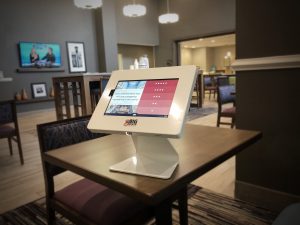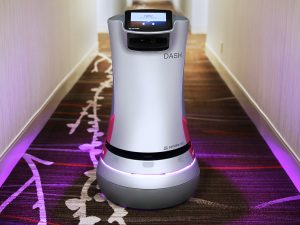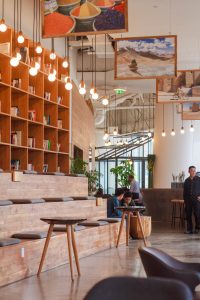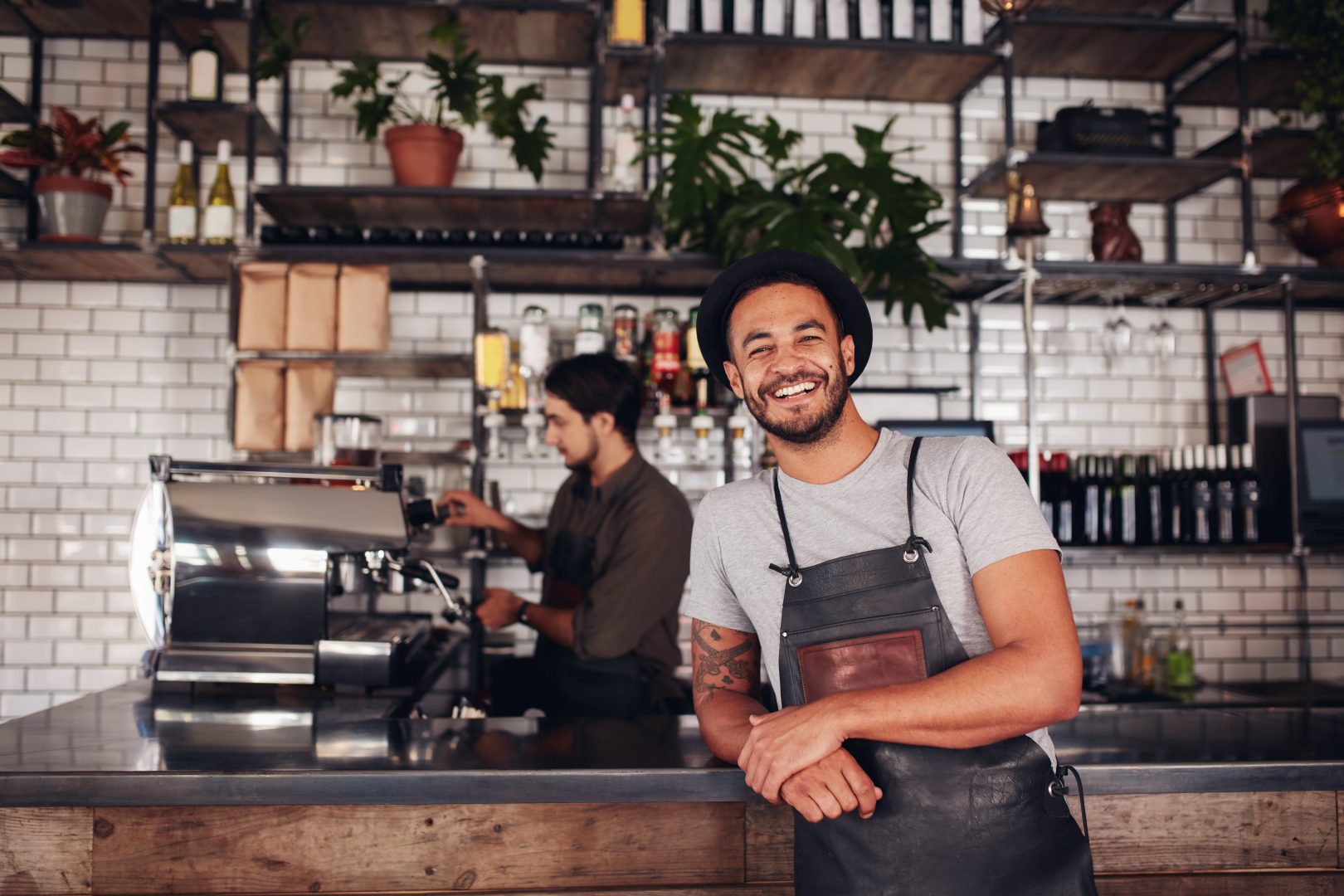Last updated 02-13-2020
By:
Natalya Bucuy
“I want you to build a hotel of the future.”
Lily leaned forward closer to Jack, just to make sure she heard him right. Jack sat across the conference room table, his fingers tapping on its surface.
“What do you mean?” Lily asked.
“Just that,” Jack replied. “We are not doing so well, Lily. The hospitality industry is changing and hotels everywhere are facing some dangerous trends. AirBnB is killing us with low prices and experiences that we just can’t offer. Our numbers are down, we’re not reaching our goals, and we lost that account with the art festival. And those folks held the event here every year for the last five years. We don’t even know why they left.”
Lily listened intensely. She’s only been with the River Side Inn for three months. Her General Manager position entailed many responsibilities and she was aware of the hotel’s challenges and the financial downfall that was unavoidable if things continued to progress the way they have been. But what was this about building a hotel?

“Lily, we have a problem. Let’s build a hotel of the future.”
“So what is this we’re talking about?” she asked Jack.
“As I said, we need to rebuild, restart, rebrand. We need to get ahead of the game. Way ahead,” Jack sat up in his chair. “I want you to build a hotel of the future.”
“What does that mean, Jack?”
“I don’t know. That’s why I need you. I want you to find out what it is people want. Technology, amenities, balloon artists in the lobby? Whatever it is, we have to offer what no one else offers. Make it different, special. Think outside the box, outside of these walls, outside of what we know. We need to take ourselves into the future. And I think you’re just the right person to do it – you’re creative, intelligent, and resourceful. Build a hotel of the future, Lily.”
All we have to do is ask.
Lily left the conference room, puzzled. Hotel of the future. Find out what people want. How?
Unsure of the task handed to her, she walked down the hall of the River Side Inn and entered the lobby. She took a look around. Light wooden panels in modern shapes lined the walls, comfortable couches, a coffee machine, sun shades, cheerful art completed the picture. Everything looked up to date, beautiful, and welcoming. But something was missing. Something that guests and event organizers wanted. How would she ever figure out what that was?
Lily walked through the lobby and took a seat at the restaurant bar. Within a couple of minutes Jenny, the bartender, placed a fresh cup of cappuccino, Lily’s usual order, in front of her. Foamy and steaming, it looked delicious. But Lily didn’t want it. She stared at the specs of foam dancing gently on top of the cup. Then something came to her, suddenly.

“Inspiration strikes”
“Jenny,” she said. “I have a question for you. Why did you give me this cappuccino?”
“Um, you’ve had it every day since you started here. It’s your usual,” Jenny replied. “Yes, but what if I don’t want it today. You just gave it to me. You just assumed I wanted it. Why?”
Jenny looked at Lily and tilted her chin to the side a bit with a puzzled look in her eyes.
“You don’t have to have it, Lily,” she said with a slight smile. “I just figured that’s what you wanted.”
“Precisely!” Lily exclaimed. “You didn’t ask me, you assumed. And if you don’t ask, if you just assume, there is a good chance you’re going to get it wrong.”
“Right…” Jenny still looked quite puzzled. “Something tells me you’re not talking about the cappuccino, Lily.”
“You’re right, I’m not,” Lily said. “I’m talking about our customers. We assume we know what they want, but as it turns out what they wanted yesterday is not what they want now and might not be what they want tomorrow. And we can’t know what they want now if we don’t ask. All we have to do is ask. And then we can build a hotel of the future.”
Feedback is hard to come by
The following Monday Lily came to work feeling determined. She did have her regular cappuccino at the bar while chatting with Jenny, who asked Lily if she actually wanted the beverage this time.
“We’re going to overhaul this place, Jenny,” Lily said. “But we’re not going to just pick the latest trends or copy what everyone else is doing. First, we’re going to go to our customers and find out what they want. But we are not going to stop there either. We’re going to work all together as a team. We’re going to talk to our staff, our vendors, everyone. And then we will give people what they want.”
“That sounds quite ambitious, Lily,” Jenny smiled. “But I like where you’re going with it. How will you be able to ask people for opinions, though? That’s a lot of people to interview. And customers are not big fans of surveys. I mean, we have a website link printed on every receipt, and we very rarely get any responses.”
“Ah, yes, I know,” Lily pulled out a piece of paper with numbers on it from her black leather folder. “I did some research about feedback surveys last night. The response rate on receipt surveys averages at less than one percent! Can you imagine? What a waste! We do send out an email to all our guests after their stay and ask for feedback. But that doesn’t get much response either. We could find some information in our online reviews, but they are usually quite vague and general.”

“The numbers give some insights”
“And we do need some input from our staff, too. After all, happy employees make happy customers. Interviewing employees for any feedback turns out to be a difficult task though,” Lily continued. “People want to stay anonymous when providing feedback because they think being honest will affect their jobs. So it’s difficult to get honest answers.”
“I’d give you my two cents honestly, you know that,” Jenny smirked. “I don’t hold back.”
“Yes, but others might not. So, we need a better way. And I think I found it.”
“Oh yeah? What is it?”
Lily reached into her bag that was sitting on a chair next to her. She pulled out a rectangular fabric sleeve, unzipped it, and retrieved a tablet.
A Tool of the Future
“A computer?” Jenny raised a brow. “How will it help?”
“Not just a computer. It’s a feedback collection tool. We can input any questions we want into it – asking for ratings, yes-or-no questions, and even allow for open-ended responses. And we can learn what guests like and don’t like, what hotel amenities guests want but we’re missing and what we can get rid of.
“We can place these feedback kiosks everywhere – in the lobby, in the restaurant, at the front desk, at the gym, we can even put one on every floor for more input. Imagine, a guest is waiting for the elevator on the fifth floor with nothing to do. But here’s a survey he can take. People actually like to provide feedback as long as it doesn’t inconvenience them. Same with employees – we can put these in the break rooms or anywhere, really. It’s anonymous, quick, and easy.”

“What do you want to know?”
Jenny took the tablet into her hands. The screen’s bright colors looked quite attractive. She found the screen’s “Tell Us What You Think” prompt hard to resist.
“This one is actually set to ask questions about food waste in the employee cafeteria,” Lily said. “I think it’s quite a problem because we waste so much food there. If we knew why we could really save some money on food costs and probably provide better options for our staff, too. This questionnaire will help us figure it out.
“It actually not only increases the likelihood of people taking the survey. This thing does so much more than that. It also prompts guests to opt-in to get a link in an email and then complete an online review later on. Case studies of these feedback kiosks show an online review boost of 54 percent. That’s huge!”
Jenny continued to click through the survey.
“This is actually quite neat,” she said. “I think it’s even fun to take it. Like a little quiz. I like it.”
“Good!” Lily said. “Now I just have to go tell Jack about it. I think he will like it. And then we will use these tools to help us build this hotel of the future.”
Hotel of The Future
Lily entered the conference room, the same one in which Jack tasked her with building the hotel of the future only a year ago. Seated at the table with two women, he smiled at Lily.
“And this is our General Manager and the brains behind our entire operation,” he said.
“Oh, Jack,” Lily smiled shyly. “No need to talk me up. This place is a team effort.”
“Oh, don’t you be so humble,” Jack laughed. “You did it and only in one year’s time. You built the hotel of the future! I want you to meet Siera, and Kylie. They are here to discuss bringing the art festival back to River Side Inn this year.”

“If you build it they will come”
“Absolutely!” said Siera as Lily sat down in a chair. “We were quite intrigued when we heard about the good old River Side really turning things around. We would love to come back and do business with you guys. How did you do it?”
“Well, we listened,” Lily said. “We asked customers and employees what they wanted. And then we did as they wished.”
“That simple, huh?” Siera laughed. ‘Well, it makes sense. To be honest with you, the reason our art festival decided to pull out last year is that we felt like the staff didn’t really care to meet our needs. Our attendees didn’t feel heard or as they mattered at all.”
“I know what you mean,” Lily said. “That was a common complaint we got. But event attendees matter, too. Every guest matters.”
“So what did you change? What is the hotel of the future?” Kylie asked.
“Why don’t we take a walk and I will show you around,” Lily smiled. “There are five areas in which we improved the most.”
1. The use of robotics as staff
“So, naturally, when we talk about the hotel of the future we talk about technology. It’s a significant piece of our innovative process though not the only part,” she said as the group walked out to the lobby.
“Excuse me, coming through,” a voice came from behind and down below.
Lily turned around and stepped out of the way of a little robot coming towards her.
“Oh, hi, George,” she smiled.
“Hope you’re having a terrific day,” George passed the group and continued moving down the hallway.

“So this is one of our innovations,” Lily said. “We use robots in quite a few roles here. Butlers like George are one example, but we also have luggage carrying robots, Roombas on every floor, and even a concierge robot that can help guests find nearby attractions.”
Robots can free up the time of human staff and help personalize a guest’s stay. In fact, their use is almost limitless — with just imagination and cost being limiting factors. (Social Tables)
“But doesn’t the use of robotics take away jobs from humans?” Siera asked.
“Ah a common misconception,” Lily said. “In fact, using robots for tasks they can perform more efficiently than humans allows our staff to do other things. Things that are less mundane and more engaging. We actually began the robotics implementation following the feedback we received from our own employees. They wanted to be more engaged, stimulated, and creative in their positions. Not delivering snacks and caring luggage to guest rooms allowed them to do just that.
“For example, our former bellhop, Steve, is now our in-house gardener. Do you notice how many plants we have everywhere? How beautiful our outdoor gardens are? When we talked to Steve earlier this year about his job satisfaction, he mentioned how bored he gets with the luggage duties. He said he’d rather be gardening so we decided to let him do that.”
What we asked that lead to this feature of the hotel of the future: We surveyed employees about their job satisfaction. Many of them said they would feel more engaged and satisfied in creative and stimulating positions. The use of robotics helped us achieve that.
2. The relaxed atmosphere
As the group reached the front of the lobby, Lily pointed out how space was now furnished with bean bag chairs, filled bookshelves, and comfy rugs. A few guests enjoyed the sunlight entering through the window.
“We removed all window treatments throughout the hotel to let the light in,” Lily said. “Turned out guests didn’t want them and really enjoyed the natural light. We implemented smart glass that dims if the sun gets too bright. We also have privacy glass technology installed in the showers in all of our rooms, so, again, plenty of open space.”
According to Pragma’s Fernando, guests will likely be able to use a mobile app via an in-room tablet or even voice control via in-room devices to make privacy glass in hotel guest rooms either transparent or opaque. Additionally, the glass can be personalized to display the guest’s preferred décor, whether that be a specific style and color or a calming video of a beach or a sunrise. (HospitalityTech)
“You can also see that we changed up our decor a bit, making it more inviting, homey, and relaxing. After all, many guests who come to our hotel do so to relax and get away from the fast-pace of their daily lives. So books, soft chairs, soft music, plants, and gardens are some of the new features. Some guests wanted a sauna and yoga and meditation classes, so we implemented those as well. Free of charge and available to all guests and employees. Our guests are happy and so are we.”

“Making sure guests are comfortable is our top priority.”
“But don’t all these extra features bring additional costs?” Kylie questioned.
“Actually they do not cost that much to implement,” Lily responded. “And the satisfaction of our guests and employees makes it worth it. Also, remember we talked about how human staff now has more time for more fulfilling tasks? Our yoga teacher used to be the concierge. Now that we have a machine doing that she can do what she loves and we all win.”
What we asked that lead to this feature of the hotel of the future: We asked the guests about their preferences as far as amenities go. They told us what they wanted and we added those features. We also eliminated the ones that didn’t matter so much, like the business center we used to have. Everyone uses a cell phone these days so it was underutilized.
3. Personalization
From the lobby, the women headed down the hallway and Lily unlocked a room.
“Alexa, turn the music on, please,” Lily said, as the group walked into a naturally lit room with plenty of open space, beautiful furniture and a wall tapestry picturing birches. Soft jazz music filled the air. “We use quite a few features that make the guests stay as comfortable as possible because everything is catered and personalized. Either prior to guests’ arrival or upon check-in we ask that the guests answer just a few questions about their preferences – room temperature, specific snacks, music, even specific room decor as our rooms vary in design. Then we do our best to accommodate.

“Unexpected personal touches improve guest experiences.”
“We send the information we have to the room so by the time the guests enter the room it is adjusted to their preferences. We use the Internet of Things, wireless technology, and voice-activated devices to make it all work together like a smooth machine.
“But, again, with all these additional expenses, how are you able to keep your prices so low,” Kylie asked.
“Once in place, these personalization efforts do not drive our overhead up,” Lily explained. “But they create a great customer experience and a deeper connection between our guests and our brand. That, in turn, drives reviews and referrals to increase. We reach more customers and, therefore, have higher profits.”
What we asked that lead to this feature of the hotel of the future: When we presented our guest with the question of personalization we learned that the majority of guests love when a brand knows them well and caters to their needs.
4. Sustainability
Lily continued the tour of the room.
“As you might have noticed, we don’t have any paper cups or plastic utensils here in the room. We implemented sustainability practices property-wide,” she said. “Also, we repurpose trash and use the resulting compost in our gardens. We switched to LED lights, installed low-flow faucets, got read of all paperwork as everything is done digitally, and eliminated our printing services. We are in the process of installing solar panels on our roof. Our future renovations plans also include a green roof and perhaps even an on-site vegetable garden that will supply our restaurant kitchen.
“And before you ask, these efforts are saving us money. Before we implemented these new practices we learned that companies have the potential to unlock $12 trillion by 2030 in business savings and revenue by pursuing sustainable, low-carbon business models. Part of these savings come from, once again, attracting more guests to our property. According to a study we saw, 89% of U.S. consumers say they are loyal to brands that share their values. We want to be one of those sustainable, green brands.”

“Sustainability is a necessity in the hotel of the future”
5. Customer Experience
“Well, you really do have a hotel of the future here,” Siera said as the group made it back into the lobby. “So that’s your secret, listening to the guests and giving them what they want?”
“Yes, and employees and vendors as well,” Lily said. “Listening is a big part of the process we used to improve overall customer experience. There is more to that, of course, but when we put our guests and employees first customer experience flourishes. That’s what we strive for – positive, personable, sustainable, welcoming effortless experiences. That is what sets us apart and that’s what takes us into the future.”
As Siera and Kylie said their goodbyes, Lily sat down at the bar where her usual cappuccino was already waiting for her.

“Sounds like the art folks are back,” Jenny came up from behind the bar. ‘You did it, girl.”
Lily took a sip of her favorite steaming drink only Jenny knew how to make.
“No, we did it,” she said. “All we had to do was listen. As David Augsburger said,
‘Being heard is so close to being loved that for the average person, they are almost indistinguishable.'”

